#Garden Rant
Text
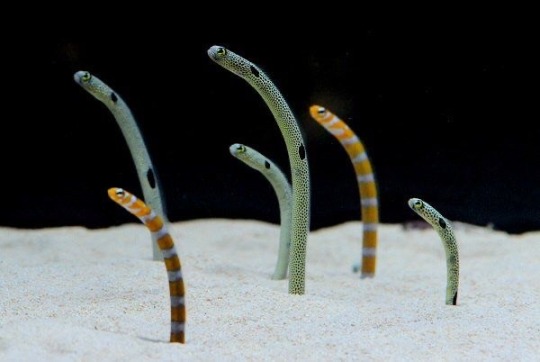
mutuals let’s do this
#Ozias rants#eel posting#eels#grass eels#fishposting#me and my mutuals#idk#shitpost#marine biology#I love fishies :3#garden eels
11K notes
·
View notes
Text

I'm so sorry

#otgw#over the garden wall#the beast#honestly I don't even think he is scary anymore#I can rant about how funny and absurd his plot is for hours#Like...remember how the fandom decided that he keeps finding and masterminding different lantern keepers?#the thing is - IT WAS NEVER THE CASE#the woodsman just swung his axe on the guy in the comics and this silly creature went ! and dropped the only thing keeping him alive#And then the Beast had to come up with this fairy tale about the Woodsman's daughter being in the thing so the crazy dude won't shattert it#BUT OH WAIT the woodsman decided that he is going to keep the lantern to himself if that's the case - good job brainiac#and the beast even tried to steal the lantern from him a few times in the series but he had to be sneaky about it#because well shit the guy still has this axe with him#AND THEN WHEN WIRT GOT THE LANTERN IN HIS HANDS WHAT DID THE BEAST DO?#he decided to trick him with the same freaking story that got him into this mess in the first place#He is a girlfailure
404 notes
·
View notes
Text
I keep reminding myself that not everyone has read every possible githyanki/githzerai related source going back to the Advanced Dungeons & Dragons Fiend Folio. Not everyone has this level of Special Interest. Not everyone is actively trying to track down good hard copies of most of these books. Nor is anyone obligated to do so.
So here you go: I'm going to explain why "githzerai good/githyanki evil" is completely reductive, not in line with the lore, and would be ridiculous to add to BG3.
The githzerai are far, far, FAR from saints, and including them in BG3 would just muddy the waters further. They aren't just running around being the good to the githyanki's evil. And never have been. They've been chaotic neutral since the Fiend Folio, and they did not become Chaotic Good in the years since. In fact, I'd make the argument that, based on their canonical behavior right up to the present, "chaotic evil" would be an appropriate alignment.
Back in second-edition D&D, in the Planescape Book of Chaos, there's an entire section on a credible rumor that the githzerai are working on a ritual that will allow them to pull githyanki out of the Astral Plane into their city so they can "punish them for their evil." (Page 76, if you're curious.) Dragon magazine #306 (an official source), there's an article entitled "Killing Cousins." It details the gith-attala, or...cousin hunters, githzerai who specialize in hunting down and killing githyanki. They go after githyanki anywhere, but in particular strongholds on the Material Plane. As of Mordenkainen's Tome of Foes (again, official source), it's explicitly stated on page 305 that the githzerai are "always on the lookout for githyanki plots to foil and creches to exterminate."
If we encountered githzerai in BG3, the most likely place to do so would be outside the creche, planning an attack that would have targeted eggs, hatchlings, and children.
The githyanki aren't coming from a place of moral good. But neither are the githzerai. Simplifying it down to good vs evil does the entire story of the species a disservice.
#nork rants#githyanki#githzerai#fight me i have the books to back it up#and this is without getting into the whole#'the githyanki want to conquer everything'#no that's the gul'othran who haven't been seen since 4e#the githyanki treat the various worlds as ~gardens~#for plunder not conquest#again see mordenkainen for the present state of affairs#and for the gul'othran#that's d+d 4th edition secrets of the astral sea p 97
122 notes
·
View notes
Text
Things I would immediately change about landscaping/the landscaping industry in America if I could (after supporting my family by doing garden maintenence since 2019, and being an avid life long gardener and plant person):
1. Make people realize that any style that is based on cutting back plants multiple times per year to "maintain their shape" or keep them from getting "overgrown" is rooted in the idea of conspicuous consumption and is not actually the only, or best, choice. It exists to show off the fact that you have enough wealth to do work without a yield other than short-lived aesthetics and conformity. This includes: lawns, boxwoods, any shrub/vine/tree/fern cut into a box/sphere/cylinder, shrubs/trees that are maintained at a (small) fraction of their mature size, etc.
2. Make people realize that we don't need to be watering as much as we do. Through thoughtful plant selection and the power of mulch, you wouldn't need to water at all during "normal" weather. If you live in a desert, you live in a desert, and unless they're making food or medicine, most of your plants should be able to live in a desert (I really hate saying should though, so maybe just start by learning about the native plants in your area and the role they play in the ecosystem. I'm pretty sure you'll end up falling in love with at least a few of them).
3. Convince people that you can use native plants in your garden, in an aesthetically pleasing way, while reducing the amount of watering, soil amendments, and fussing in general that's needed, while also supporting native animal species. Talk about a win-win! I mean, people go to great lengths to look at natural beauty, and then work. so. hard. to prevent that beauty from showing up in their yards.
5. Finally get people to understand that landscape fabric does not work as advertised/ makes it so you don't have to weed ever. It was apparently intended as an underlayment to rocks, gravel, etc, to prevent them from sinking into the earth over time, according to my boss who actually has a degree in landscape design.
6. If a plant is struggling, year after year, it's probably the wrong plant for that place. It's better to pick plants that are well adapted to your climate, and they'll be less stressed. Plants that aren't stressed are less vulnerable. Less vulnerable plants mean healthier plants that are less likely to have an infection or infestation. And look better. And stress you out less. Unless that's your hobby, and you know it, in which case have fun.
7. If you don't enjoy gardening, you don't need to have a garden. If you don't enjoy a lawn, you don't need to have a lawn. Having land that you're responsible for should be a joy, and if it's not, there is no shame in either not having land, or, letting someone who otherwise wouldn't have access to gardening space take care of it.
I'm sure I'll think of more.
343 notes
·
View notes
Text
Personally I love mapping joongdok onto ivantill. It works so well. But I also disagree with most people's take on it.
From what I've seen, most people map Joonghuk onto Ivan and Dokja to Till. I don't agree with this sentiment. I think Joonghuk fits better in Till's role (despite the color pallet) and I also think Dokja fits well into Ivan's role.
Explanation 1. Dokja has read and stayed devoted to a man he thought he'd never meet for thirteen years. That's dedication. To him, that dedication and loyalty was not something that could possibly bare fruit. He just wanted to see the end of the man's story.
Explanation 2. Joonghuk is... well Joonghuk. He isn't someone I see as emotionally perceptive of others. Besides, he also rarely pays Dokja much mind, (especially in the beginning) outside of them constantly bickering. He only started looking at Dokja more after he sacrificed himself for Joonghuk (Ivan who?).
Explanation 3. Have you seen the way Dokja looks at Joonghuk? Also the way Joonghuk stares at Dokja?
Dokja has a deep admiration of the man. He holds him in such high regard over him, despite their bickering. He's never truly angry at the man. He's just enjoying whatever part of his presence he can get. (Let's be honest here, he looked up to Joonghuk for thirteen years. What you do in that situation?)
Meanwhile it's clear Joonghuk is left with emotions he hardly understands. Jealousy he can't explain, longing he doesn't know where to place, regret he doesn't want to feel.
Ivan knew what he was feeling, he knew, but he chose not to act. Till only noticed after Ivan was dead in front of him. After he finally realized what he meant to the man.
Maps well, doesn't it?
#ivantill#yoo joonghyuk#joongdok#kim dokja#orv#alnst#alnst ivan#alnst till#angst#alnst au#garden rants#sorry not sorry#i'm not crying you're crying#i swear im normal#i'm not blasting cure into my ears i promise#actually i might be#we're all traumatized here bitch
54 notes
·
View notes
Text
Tropical Milkweed, Its Problems, and What To Plant Instead
I am writing this to atone for the sins of my past (handing out tropical milkweed cuttings to my friends and teachers before I knew better).
(Also let me make this clear I am Floridian I am writing this from the perspective of someone in the United States if you live in Tropical Milkweed's native range this doesn't apply to you go forth pogchamp)
Look online, on TV, in books, in newspapers, left, right, up, down, anywhere, and you'll see people talking about how planting milkweed is crucial, essential for the survival of monarch butterflies. Milkweed is the only plant that monarch caterpillars can eat as they're growing, and the loss of it in our wild spaces is one of the most direct links to the ecological extinction speedrun of not just monarchs, but dozens of other insects who rely on its abundance of nectar-filled flowers to survive. You'll be urged to run, not walk, to your nearest garden center, buy as much milkweed as you can, and hurry fast to plant it in your gardens and be part of the solution, not the problem. The issue is that, oftentimes, the milkweed you leave the store with is a vibrant red and orange, with pointed green leaves, dozens like it lining the shelves across stores all over the nation...
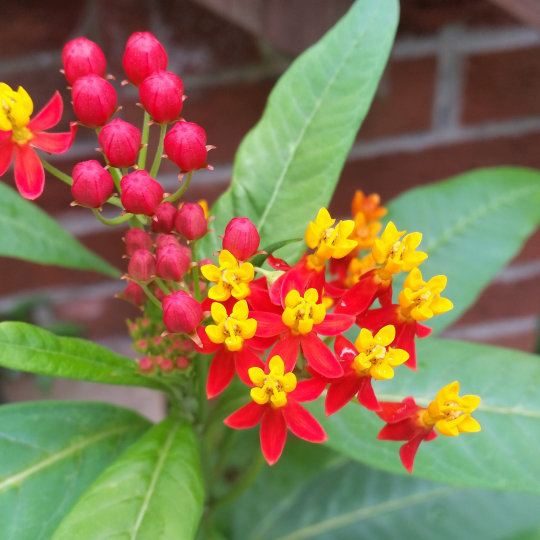
Tropical milkweed. Scarlet milkweed. Bloodflower. Mexican butterfly weed. Asclepias curassavica. This plant is a being of many names, and our culprit of the hour.
'Culprit? Culprit of what?' Culprit of enticing people to buy it under the guise of helping, only to possibly cause more harm than good.
Let's discuss.
Tropical Milkweed (Asclepias curassavica) is a gorgeous milkweed (especially the yellow variety? ooh, that had me in a grip as a teen) that's easy to obtain--too easy. It lines the shelves of stores like Walmart, Lowe's, Home Depot, and even hundreds and dozens of smaller garden stores, and is sold for reasonably cheap because its quick and easy to grow from seed and eagerly roots from cuttings. It's extremely popular with butterflies too--in many scenarios, Tropical Milkweed will be preferred as host plants over other related species like Butterflyweed (Asclepias tuberosa), and its also popular with other species of butterfly, bees, and wasps as a nectar source. It lasts well into winter in some areas of the United States, is quick to regrow when cut back, and doesn't die back for periods of the season like some other milkweeds do. It's eager to reseed, creating capsules with tens of dozens of seeds and scattering across the winds with the help of little silky parachutes much like the ones dandelions are known for.
'Ani, what's the problem with that? This all sounds like its great for monarchs!'
See, here's the kickers. In fact, here's several kickers. Here's an entire mollywhopping of kickers.
OE Infections
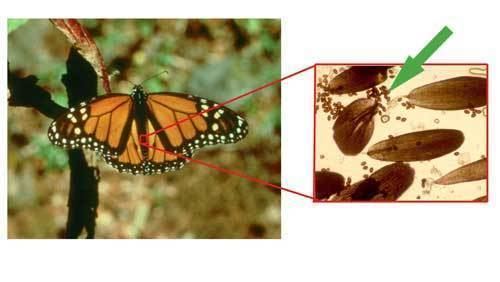
In the temperate areas that it doesn't die back over winter (or even, in some cases, where it doesn't die back during the season like other milkweeds), it can become a host for OE. OE is short for Ophryocystis elektroscirrha, and its a protozoan parasite that can and frequently does infect monarchs. As infected monarchs visit different plants--whether its to drink nectar, to lay eggs, or even just doing a fly-by of the garden--they drop spores from their wings that can then fall onto the leaves, flowers, and even any eggs already on the plant. As caterpillars hatch and begin to eat the plant, they ingest the protozoan, which begins the cycle anew. High OE levels in adult monarchs have been linked to lower migration success, reductions in body mass, lifespan, mating success, and flight ability. And that's if the caterpillars don't succumb prematurely to the infection, or if they're able to even exit their cocoon and fly once they finish pupating--deformed wings are frequently a result after infections. Now, OE is a parasite that's evolved alongside monarchs--and monarchs are usually able to handle an infection just fine, but if they're carrying a high load? That's where the problem lies.

What role does tropical milkweed play in this? Most milkweeds die back after blooming, at least once or even twice per season--and the parasite dies alongside them. As native milkweeds push out fresh foliage, its parasite-free, offering a healthy new buffet for caterpillars. Tropical milkweed... doesn't do that. If nothing's done, (at least in my state of Florida) tropical milkweed will stay fresh and green all the way up until the first real frost hits way in December--and that's if there's a hard frost, when you travel farther south. And during all that time, OE levels are building up on the leaves, so any future caterpillars that feed on this plant are doomed the instant their egg is laid on a leaf.
Its not that it's utterly impossible for a monarch to get infected with OE on any other kind of milkweed--monarchs are known for their traveling habits, and the chances of them happening upon a different milkweed plant than the tropical milkweed in your backyard is pretty high. But whereas native milkweeds die back and essentially reboot their system with fresh, disease-free leaves at least once a season, tropical milkweeds are like downloading a virus onto a USB and then passing it to your friends.
But that's not all, either. Time for kick 2.
Migration Interruption

Sit with me a moment and imagine you're a monarch butterfly. You're hardwired to know that as your food source starts dwindling at home, its time to get a move on and fly on down to the family's vacation home in Mexico for the winter. The buffets shut down, you exit stage left. But on your way to what's essentially a season-long smorgasbord with friends, you find... a buffet is still open. You're supposed to leave when the buffets are shutting down, but this one's up and running, lights are on, and plenty of people are there having fun, so you step in to relax. You'll take your trip later.
Now imagine a bit after you entered that buffet, the staff stuffed the guests into the walk-in freezer, locked the door, turned off all the lights, locked up the building, and left.
That's basically what tropical milkweed being 'evergreen' is doing to monarch butterflies in the fall and winter seasons. In areas up north where it can stay growing far later into the fall/winter months--or worse, in the south, where it can basically be evergreen until a hard frost (if one even happens), it can interrupt the monarchs' iconic migration cycle. They'll stay in place and continue breeding, living life like they aren't supposed to be a country away--until a frost hits, and they're dead in a snap. And if there's not a frost, you're getting a bunch of OE spore-ridden monarchs flying around a bunch of OE spore-ridden milkweed plants that the butterflies who followed the rules and overwintered in Mexico are gonna be returning to. POV you're starting a family in a house so laden with asbestos and black mold that there's practically black dust floating around.
This is already pretty bad. Can it get worse? Absolutely. Kick number 3.
It's Pretty Invasive (in the US)
It's fast growing, its eager to go to seed (so eager that it can flower and produce seed at the same time), its growing all throughout winter--which would be great, if it were native to the United States. Unfortunately, it isn't! As one could imply from the name, Mexican butterfly weed is native to--well--Mexico, as well as the Caribbean, South America, and Central America.
Further North into the states, and it's more of an annual--a plant that lasts maybe a year tops, dies back permanently, and you go buy more next year, or start from seed. Further south? It's a perennial, baby--which means its got even more time to spread its seeds and really thrive in the warmer climates of places like Florida, Texas, California, etc. Not to mention, as climate change makes temperatures rise, places where tropical milkweed is an annual may quickly begin seeing it stand strong all year...
I won't pretend to be a Professional Milkweed Identifier. I'm getting better at it with time, but I'm not a pro. But most of the time I go outside and I go 'oh, that's a milkweed!' its tropical milkweed. I've seen it grow in the sidewalk cracks of a gardening store I go to--its a clean four feet tall, always flowering, always making seeds. Tropical Milkweed is eager to escape the confines of your backyard, or make more plants in your backyard--I started with 5 plants one year, and the next year I had seven, then twelve, and that's just the ones that didn't get mowed over in the seedling stage...
But wait, that's not all! Kick number 4, baby!
Toxic to Monarchs????
According to the Xerces Foundation, emerging research suggests that tropical milkweed may become toxic to monarch caterpillars when exposed to the warmer temperatures associated with climate change.
'What the fuck, I thought milkweed was good for monarchs! How the hell does that happen?!'
All milkweeds produce cardenolides in their sap--a type of steroid that are toxic to most insects (and even people). Milkweeds create it to repel herbivores that would munch on it otherwise--except for milkweed butterflies (Danainae family), like our legendary monarch, as well as the queen and plain tiger butterfly. Larvae eat up milkweed leaves like there's no tomorrow, to stock up on those cardenolides and become toxic to their vertebrate predators--except for a few species that have evolved to become cardenolide-tolerant (black-backed orioles and black-headed grosbeaks). But, when cardenolide concentrations are high enough, it's too strong for even monarch butterflies to withstand--they die because of the very plant that's supposed to give them life. Kinda fucked up. Comparatively, many native species have lower cardenolide levels--and don't immediately go into flux at higher temps like tropical milkweed does.
'Wait, Ani, if there's all these problems with tropical milkweed, why is it sold everywhere?'
Capitalism. The answer is capitalism.
Well, actually, its a bit more complicated than that but it's also still capitalism.

The very same things that make tropical milkweed so invasive and such an issue are what make it so incredibly popular to sell. It's fast growing, and eagerly starts from cuttings as well as from seeds--which is perfect for growing tons of plants in quick and easy batches to send to vendors all over and get a quick profit. It's easy to grow from the home gardener too--its resistant to most diseases, looks gorgeous almost year-round, is quick to return in many areas without even the slightest sign of a die-back, and is popular with monarchs and other pollinators. Want to start a pollinator garden with quick results? Plant milkweed--and when tropical milkweed is all that you see available when you walk into your beloved store, it's what most people are going to get without thinking twice. Not to mention, when you hear it starts quick from cuttings, and you really wanna get your friends and loved ones into pollinator gardening, well... you get well-meaning people sharing invasive plants with their homies, like I did in high school. I've been pollinator gardening for around sixish-sevenish years (I think) and I didn't even catch wind that tropical milkweed was invasive until three years in! To say I was mortified doesn't describe it fully.
'Wait, three years ago? So information about this has been out awhile! Why aren't more places selling native milkweeds by now?! Why are people still buying this invasive milkweed and not native ones?!'
It's capitalism again! But in a different way.
Compared to tropical milkweed, many other milkweeds are a lot more... finnicky to get started, or grow in general. Many of them are a lot slower to germinate, are more prone to failing as seedlings and falling victim to things like 'dampening off' or 'too many aphid' or 'the vibes were wrong.' If they do germinate, they're slower to get to size too--I've grown tropical milkweed from seed in solo cups and gotten something about four inches tall within maybe a month and a half. Some other milkweeds I've grown from seed take about a month and a half to get more than four leaves, or even poke their little green heads out of the dirt. In addition to this, milkweeds have taproots--and some are a lot more friendly to the concept of 'transplanting from a pot to the ground' or 'growing in a pot at all' than others, and tropical milkweed ranks at the top of that list again. Not to mention, their willingness and ability to overwinter in pots--many native milkweeds fail that test, meaning that even if all the resources and efforts are put into getting a milkweed to grow from seed, it won't survive longer than a year in that pot. Considering most milkweeds don't flower until a year or so into their growth, and it's easier to sell plants that are flowering... many plants are a tough sell.
Another reason? Some native milkweeds are way more picky about when they want to make seed pods, or what conditions their seeds want to be grown in. If the seeds are hard to obtain? Good luck growing them in a production greenhouse. Let alone finding seeds for sale to grow them yourself at home--in my hunt for native milkweed species, I've seen packets of ten seeds sold for twenty bucks, packets of 25 seeds sold for anywhere from 50 to 100--meanwhile, you can find dozens if not hundreds of tropical milkweed seeds sold in a pack for maybe a dollar or five.
Let's be real. Producers haven't figured out the magic ticket to pumping out native milkweeds like they have with tropical milkweed--as such, finding native milkweeds for sale is rare, and they're often pricier. And as someone who's been to a native plant sale and found the stands sold out of milkweeds not even 30 minutes into the event--you are likely not the only person wanting native milkweeds. It is war out there in the garden parties.
And that's assuming you've actually found native milkweed for sale! As you get better with milkweed IDs, you'll be able to clearly identify the liars who are telling you they've got something that they don't, but for those who aren't In The Know--if you see a milkweed labeled like a native milkweed and want to buy native milkweed, it might be too late by the time you realize you just got sold tropical milkweed with a mislabel. Whether its on accident or on purpose, it still bites.
I've asked some of my favorite, smaller greenhouses if they'd be willing to start selling native milkweeds. Most of the time I get an exasperated 'I would love to.' But they can only sell what the vendors can produce--so if they can't find a vendor that's selling swamp milkweed (or at least reliably), then they can't give me swamp milkweed when I poke my head in asking if they have any in stock. Of all the times I've gone to dozens of different green houses and gardening events, in different cities even, to see if they have any native milkweeds I've only had success a few times--one small vendor who only has them in stock at events sometimes (and that's if I don't show up late), and the one time I rolled into a not-big-box-but-not-small gardening store near my friends house after being sad that I couldn't find it at a different gardening event. And the one I found there was the last one they had in stock for the next month or two. Until The Vendors get better at growing native milkweeds, your best bet is going to be growing it from seed yourself, getting a start from a friend, or dumb luck at smaller nurseries and events. It's rough out here, friends.
Granted! Keep in mind! That whole last paragraph was personal anecdotes. It's entirely possible that other places' greenhouses have already caught on, and I'm simply in the shadowlands where nobody's selling native milkweeds except for once or twice a year and selling out within 20 minutes of opening their damn booth. And I've heard tell of people getting milkweed popping up willingly in their backyards by doing things as simple as not mowing. I pray you have better luck than I do, young Padawan.
Now, keep in mind, there are people actively working on this. Whether its a team of university scientists dedicating themselves to a project, or a few home-growers in a sunny backyard and a greenhouse doing their damn best to grow native milkweeds as efficiently as possible for themselves and their friends, there are people working on this, sharing advice and communicating online. This isn't some unresolved issue that no one has noticed. We just... aren't at the end post yet. Until then, we scrounge for what we can.
'Oh no, oh god, I have a bunch of tropical milkweed plants in my garden!! Am I a bad person?!?!'
No You Are Not A Bad Person For Growing Tropical Milkweed
And I'm perfectly honest about that. Because I'm here telling you this and I've still got tropical milkweed plants in my backyard. As that one comic once said, about 10,000 people learn something new every day, and unfortunately today that 'new thing' is a bit sad and a bit untimely. In full honesty, oftentimes in my brain I refer to Tropical Milkweed as Starter Milkweed--its what a lot of pollinator gardeners end up starting with, because its just so available! But! There are things that you can do to mitigate the Damage that tropical milkweed can bring to your backyard butterflies.
Step One: Cut back your milkweeds! At least once a year, maybe even twice a year if you want. This will force them to put out new growth, which will be free of OE spores and give monarchs on it a good head start against the Disease. But for sure, for sure, cut your milkweeds back in the fall--once October hits, I go into the backyard and I snip down everything that's tropical milkweed. Usually at this point (at least for me), the milkweeds don't try to grow back again until spring. This is to prevent monarchs from seeing a buffet and getting locked in the freezer.
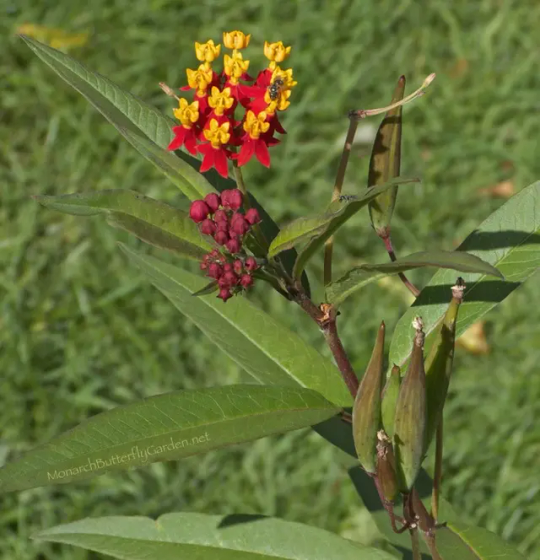
Step Two: Cut back seed pods! You would not believe how many seed pods milkweed makes. You see those little green footballs? You wanna snip these back ASAP. Even if they're tiny, but especially if they're bit. In peak flower production times, I'll go out there at least once a week and just do a look-back and cut them off. You can even yoink them off with your hands if you're in a rush--just don't get that sap into your eyes. If you do this, you're stopping seed production in its tracks--and don't forget, these plants want nothing more than to split those pods open and unleash a hellfire of flying seeds all over the place. They'll float on air, they'll float on water, they'll do whatever until they land on a prime patch of soil and get started.
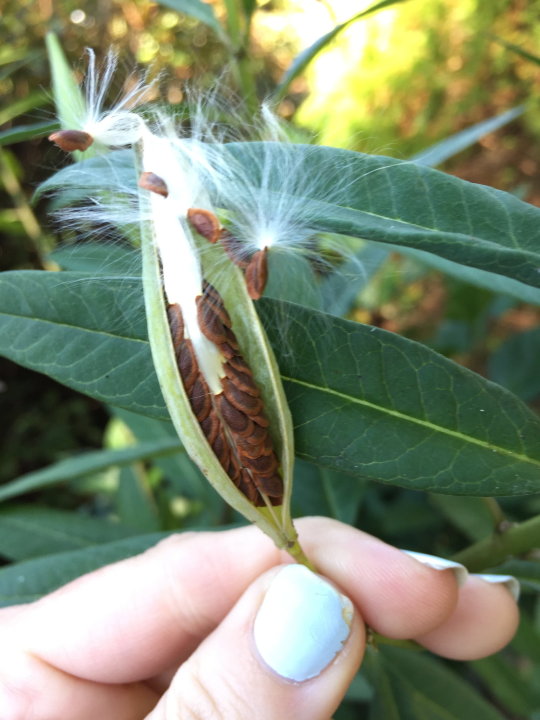
If you see these you're a tinge too late. But also still yoink that off and Dispose of it.
Step 3: Don't give cuttings to your friends. It's tempting. If you're raising caterpillars in a little enclosure and see that every time you refresh your cuttings, the old ones have tons of roots and are ready for a little pot of soil and a name tag? Don't. Resist the best you can. Dispose of your cuttings whenever you go in for a trim.
Step 4: Consider replacing them with something else! I know I already went off about just how hard it was to find native milkweeds for sale, how expensive and difficult they can be to grow--but they're not impossible to grow, and putting in the effort could be worth it! Even as I speak, I'm trying to add as many native milkweeds to my garden as possible--and when I've got something that grows reliably in my backyard, I will eagerly rip up my aging tropical milkweed plants and promptly toss them in the bin so i can put a new, better milkweed in its place. Native milkweeds are more likely to be suited to your environment, making it easier to maintain and more welcoming to the pollinators we gardeners want to help. Not to mention, a lot of them are way pettier than tropical milkweed (in my opinion). Do some hunting online to see what's native to your area--your state's extensions office will likely be great for this! You've likely got great variety--the state of Florida has 21 native milkweeds! Who knows how many your state has! (Not me, I am Floridian, and I am already getting dizzy trying to learn about all 21 of our milkweeds).
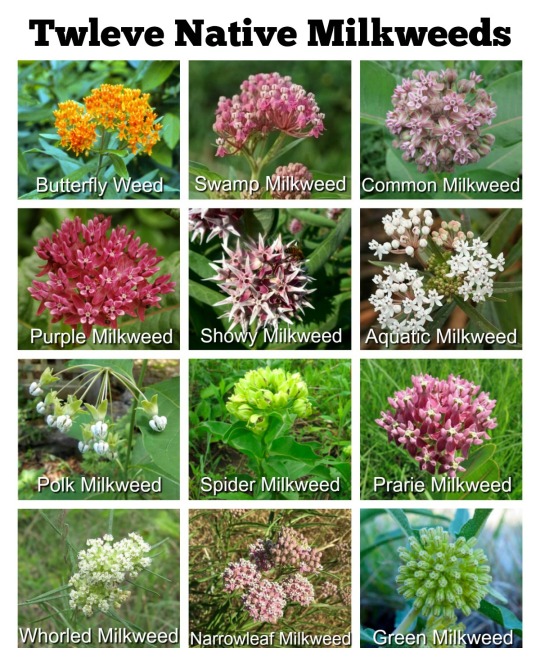
Conclusion!
Anyone who knows me knows I'm not gonna be the one to discourage someone from starting a garden, especially a pollinator gardener, and especially growing milkweed. But avoid tropical milkweed when you can--the harms it can cause far outweigh the quick satisfaction of a busy garden it can bring. Take some time to select a native plant more suited to your area, give it some friends and some time, and soon you'll have an amazing pollinator garden that'll be teeming with life!
#milkweed#tropical milkweed#asclepias curassavica#asclepias#outdoor gardening#succulents#bloodflower#pollinator garden#pollinator gardening#monarch butterfly#ani rambles#out of queue#what was it three hours ago that I was declaring that I wasn't gonna write up a long research post again?#now here i am at 3:30 am ranting about milkweed with like a dozen sources#granted this is nowhere NEAR as long as the biodiversity saga was BUT STILL#i told myself i was gonna write today... i meant one of my novels NOT RANTING ABOUT MILKWEED#if this post blows up this is gonna go on my wall of 'posts that i thought of on the toilet that got way more popular than I expected'#there's not a lot of posts on that wall maybe 2 or 3 but its weird that its happened that many times already
250 notes
·
View notes
Text

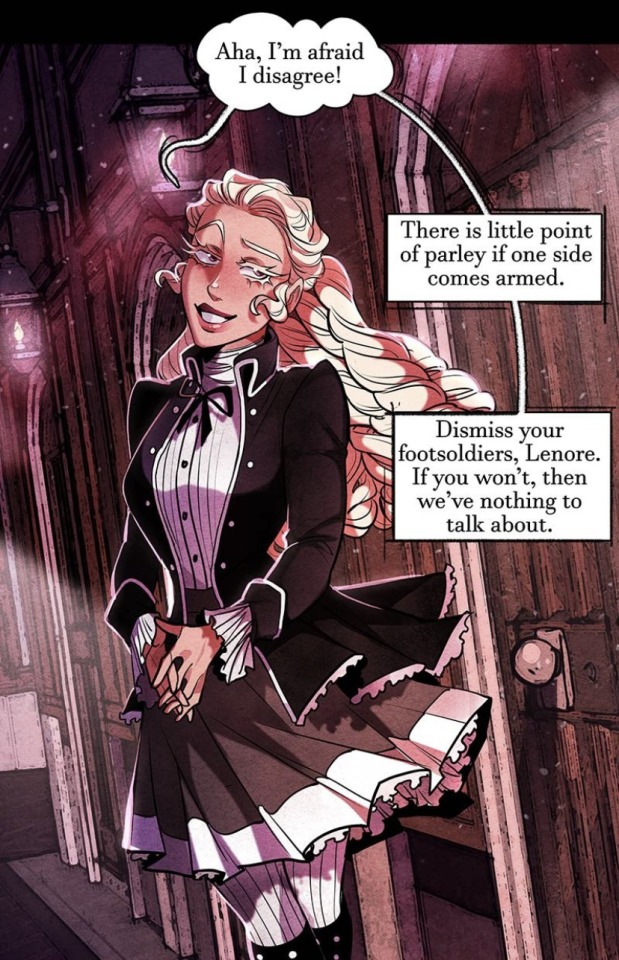

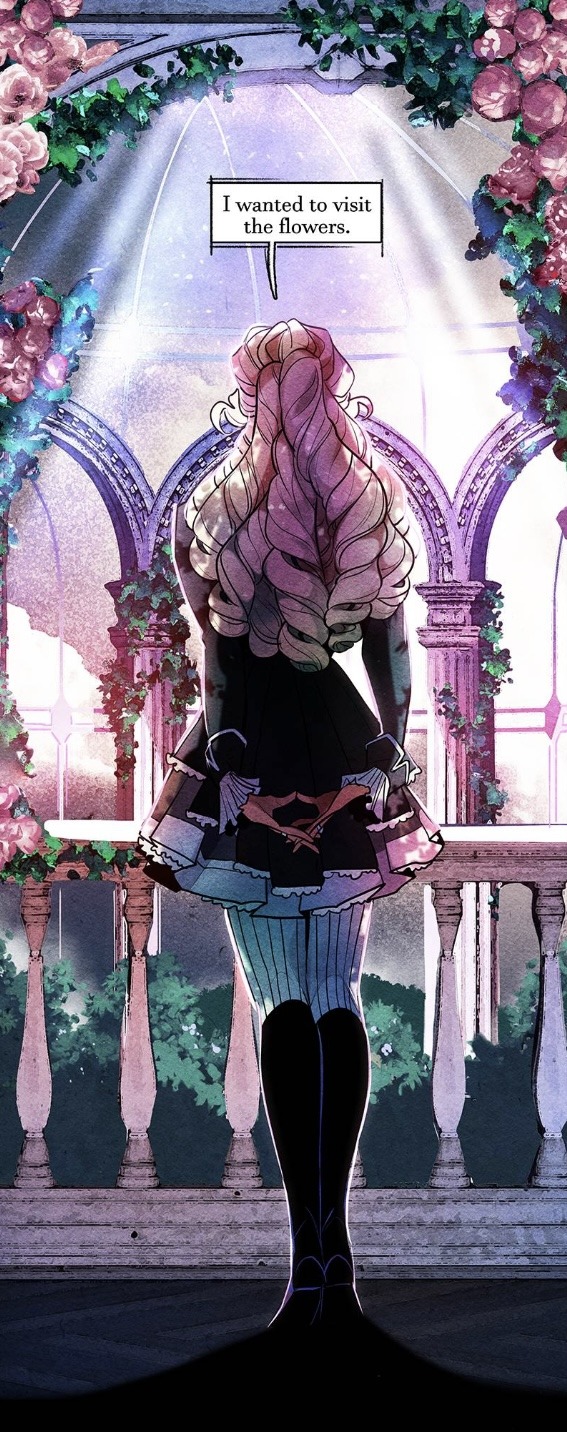



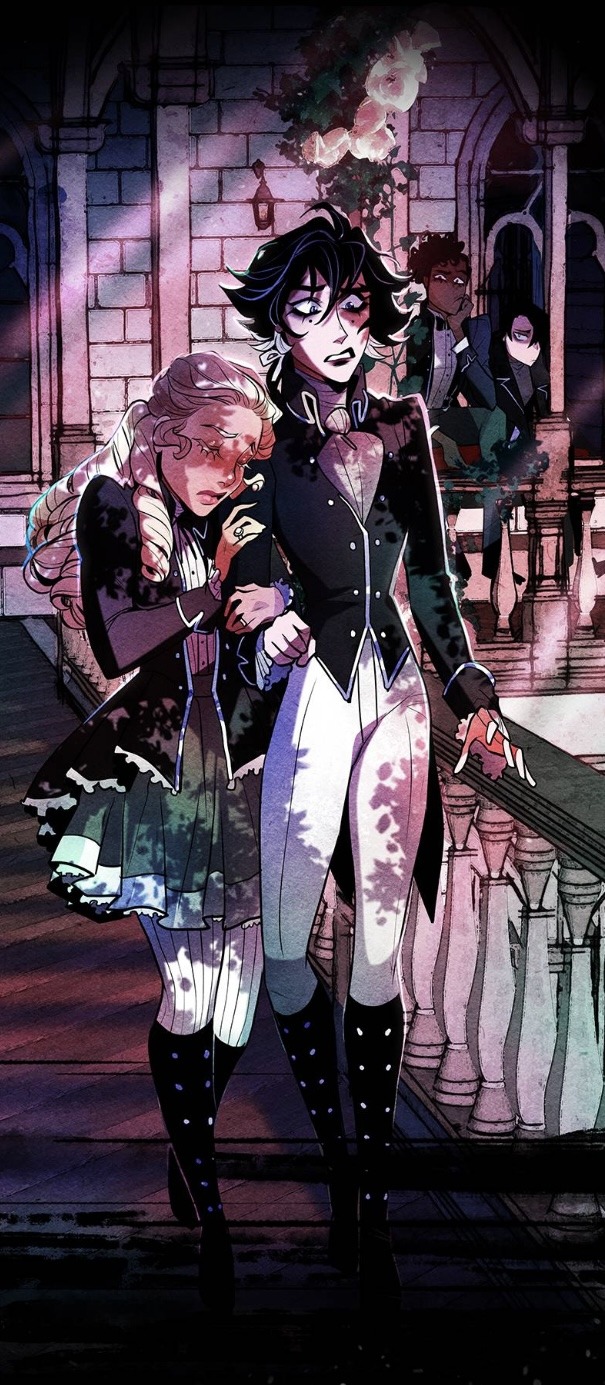

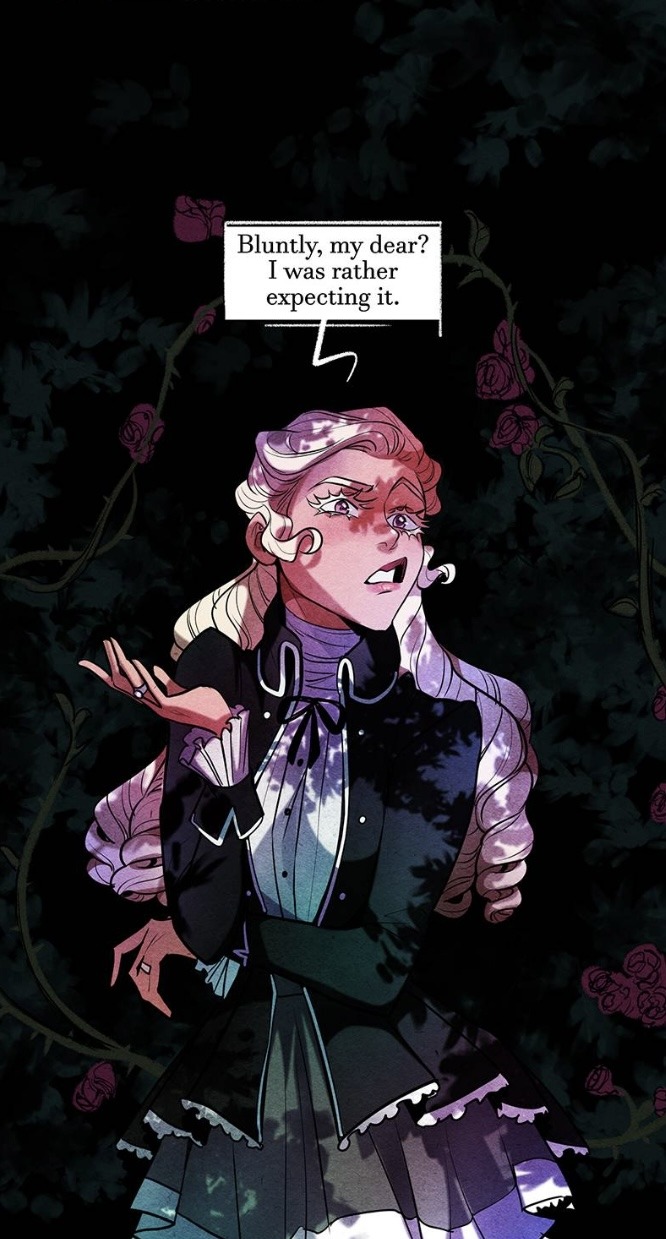

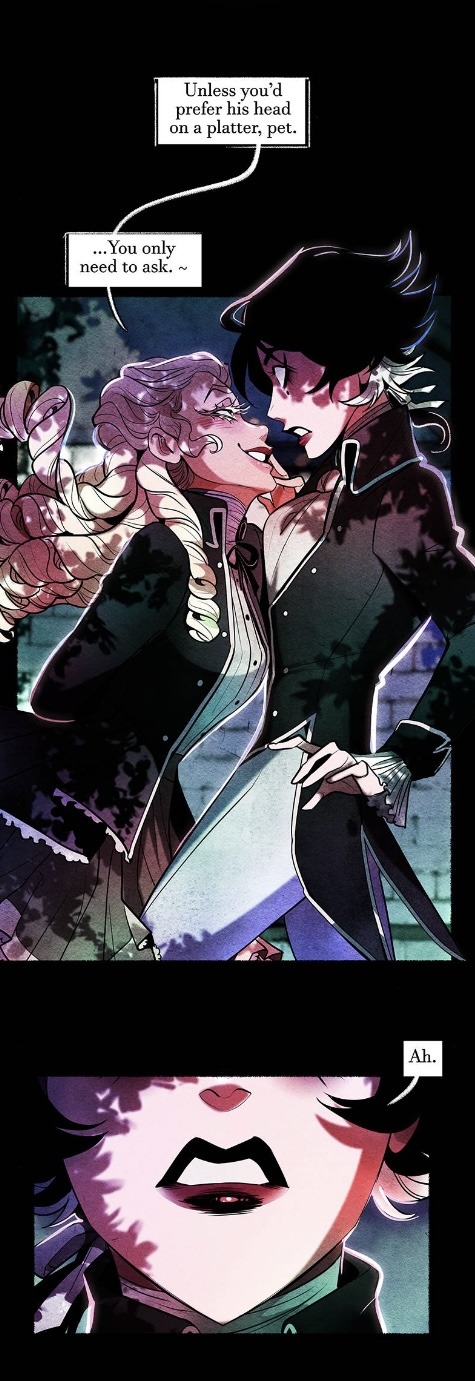

DIVORCE BEGIN *STARTS CRYING*
#Nevermore#Nevermore Webtoon#Webtoon#like...oh my god#Annabel you know the maze trio comes as that.. a trio#Anna you're so sly with your negotiatinggggg#Pluto and Duke rushing to Lenore's defense maze triooooo#Oh yes of course Duke would know something about Anna's wicked side oooohh#The arboretum's right there what#“I wanted to visit the flowers” Wow antithesis to Lenore in life being like “I thought there would be no more flowers” broooooo#“Like a toy” Annabel are you saying 28-29 was childish to you hmmm??????????#Duke and Pluto having to watch Annabel and Lenore be gay hahahah#WALKS IN THE ROSE GARDENS OMGGGGGGGGGGG#IRA WHAT ARE YOU LOOKING AT#THEY LOOK SO CUTE TOGETHERRRRRRRRR IN BOTH LIVES#YOU WERE EXPECTING HIM TO DIE OMG ANNABELLL#THE DARKNESS CONTRASTING WITH HER LIGHT COLORING SHE HAS EVIL INTENTIONS#THE PARALLELS TO EPISODE 80 WITH THEIR RESPECTIVE RANTS IT’S CRAZYYYYYYYY#She says the last line so quietly she doesn’t want to admit it waaaaaaaaa#Divorce is divorcing
59 notes
·
View notes
Text
A random person: why do you care so much about a kids show?
Me:
*eye twitches*
*takes a deep breath*
While yes, kids shows and movies are marketed towards kids, that doesn’t mean they are the only ones who can enjoy them. and with all of the shit going on in the world today, people of all ages need a little joy in their day, and I’m not going to be the asshole who denies them that joy. Kids love these shows because of the jokes and the cool colors (ngl i still like that too) but older people can enjoy it because of the incredible diverse characters, the lore and world building, and the lessons that are important for all ages. It takes a special kind of show to watch it when you’re a child and watch it when you’re an adult and still love everything about it (not just for nostalgic purposes), you can practically feel the passion and the care put into stories like that. That’s why I’m always going to watch shows and movies like that. I’m always going to write and read fanfics and speculate about thing that are never going to happen and create headcanons about my favorite characters. I’m always going to look at fan art and get so excited that someone cared enough about the show or movie that they took the time and effort to make an astounding art work of it. I’m always going to dream about the season that will never happen after the show inevitably gets canceled. I’m always going to rant about plots that upset me or characters that piss me off, even if the other person doesn’t really understand what I’m talking about. And I will always watch that show or movie and feel the same joy I did when I was a kid.
The other person: …..
Me: in conclusion, fuck you, I can do whatever I want.
#the owl house#phineas and ferb#danny phantom#amphibia#over the garden wall#gravity falls#how to train your dragon#rise of the guardians#duck tales#Steven universe#and many more!!!#rants by bean
746 notes
·
View notes
Text
Enid Sinclair is a huge movie nerd she collects old movie posters as a hobby
(Thank you for coming to my TedTalk)
#wenclair#wednesday netflix#enid sinclair#Wednesday enjoys listening to her rants abt movies#unrelated but the secret garden is the best movie to exist ever#I’m talking about the 1949 version btw
53 notes
·
View notes
Text
Plants don't even give you comparable nutrition to previous decades because we are over planting food crops.
Like y'all wanna prioritize the earth sooooo bad, stop drinking almond milk, stop importing your avocados from Mexico. Grow your own food or eat locally.
62 notes
·
View notes
Text
Anyways back to Charlie x Finn, we do need a ship name so if anyone has any ideas please either comment or reblog and I'll look over them! (Might even do a poll if I'm that indecisive)
29 notes
·
View notes
Text

hey otgw fandom
i know we're like dead and buried
but have some food regardless <3
(variation under the cut)
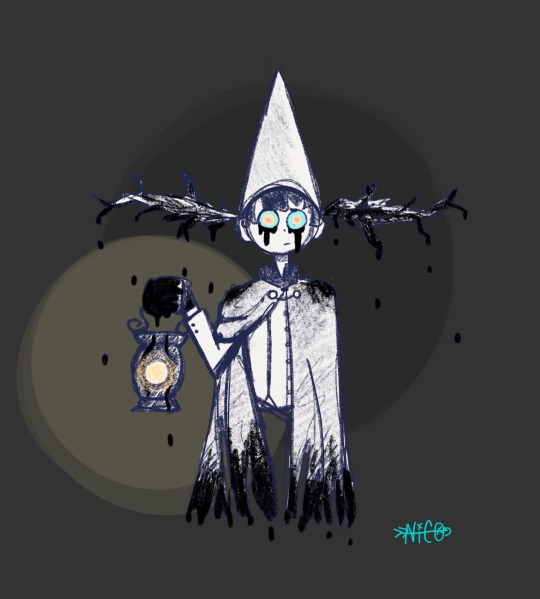
variation with limited color!! i really like this one...
anyways, shoot me an ask if you want to learn more about beast wirt and bad end friends because im obsessed
#ask me about beast wirt i want to rant so bad#/nf#im so normal about him#and the rest of the bad end friends#birthday mabel my beloved#wirt otgw#bad end friends#beast wirt au#otgw#over the garden wall#otgw wirt#digital art#beast wirt#otgw fanart#my art
29 notes
·
View notes
Text
second time watching OTGW and I might be losing my mind
I'm just rewatching this masterpiece most certainly NOT on internet archive and certainly probably not silently dying because the first time I saw this I only saw the way Wirt's selfishness was being pruned out of him by the Fae world, and I only saw the grief on the Woodsman's side, but there's so
There's so much else to see on the second time through
Like the frog? George Washington? Being able to speak English when all the other frogs can't and yet not being able to speak English when it's just him and the humans? He's sort of a look into Greg's point of view? And he's this point of weird messed up communication because he's something Wirt and Greg were supposed to find together, hunting frogs like bros n stuff
But it was kind of half done; Wirt didn't want to be a part of that adventure and he was focused on Sara for all of the duration of it. Greg did most of the work, so that's why Washington reflects him most (he can communicate to everyone, but those of his own species speak a different language than him and seem to miss his points)
I'm sorry I'm thinking too hard into this but BUT IT WARRANTS THIS
AND THE WAY THAT UH
THE BELL GIRL
SHE'S KIND OF A FORESHADOWING TO THE WAY THE LAMP HANDLES PEOPLE
HOLDING ONTO HER ILLNESS AND TRYING TO DROWN IT WITH WORK ONLY MAKES THINGS WORSE, JUST AS HOLDING ONTO GRIEF AND TRYING TO DROWN IT WITH WORK MAKES IT WORSE
SHE AND THE WOODSMAN ARE HORRIBLY ALIKE BUT WIRT TRUSTS HER MORE BECAUSE SHE RESEMBLES SOMETHING MORE HUMAN
AND THAT NEEDS TO BE SLAPPED OUT OF HIM, THE FAE CANT OPERATE UNDER THAT
Also I didn't realize how much Wirt actually seems to love Greg
Like yeah he's selfish
But that's very much towards the back half of the episodes, and by then he's genuinely had his trust shattered and he's struggling to carry burdens and Greg doesn't get that because he sees the world completely differently, he's got zero preconceived notions burned into him
Wirt has notions, he's old enough for it
And he's kind of hampered by them
Only looking at this twice did I actually see the fog that he steps into in the eighth episode, the genuine fog, and how he kind of shuts down
It's... depression?
And Greg's response is that of a kid who doesn't understand depression in the least because he just isn't old enough to have run up against it yet
I get the sense that Greg asked the lady of dreams to make him take Wirt's place, or something like that, but he has no idea what he's stepping into
Greg is so much smaller and it's really not his role to be the big brother
The beast (who could represent a whole host of stuff like depression? Fear? Self-flagellation?) demands he do impossible things and reach impossible goals and Greg does them at first but then he gets so worn out because it's so hard to sustain a beast like that
So he ends up completely immobilized by these vines of atrocious levels of fear? And he's so tiny? and he's never been through something like that
While Wirt, for all his faults, is hardened by his failures and fears to the degree that he can look his grief in the face and say "I'm not indulging you; your move."
Faerie changes Greg in a sense because it exposes him to realities that he doesn't fit, but he really doesn't seem to retain the effects of these negative realities. That or they simply don't affect him back in the human world. I mean Greg is a champ at seeing eldritch terrors and going "aw hey there, Barnaby! :D" and moving on with the retention span of a happy cucumber so maybe he just did that again. Maybe he still doesn't necessarily get the line between a bad dream and a deep truth. But I kind of get the sense he wasn't as deeply affected because the trip into Faerie wasn't for him.
Wirt, though, went through the classic Faerie-story process of being taken down to his lowest point in order to find himself, and that experience absolutely stayed with him.
I just remembered that Wirt and Greg jump out of a cemetery as the first step to get into the Unknown and the way it goes is Wirt cries "that's it, this is the end" like the drama queen he is and Greg immediately interprets this and jumps off the wall a moment before Wirt does
Greg knew a moment before Wirt moved that Wirt was going to jump, so he jumped first
He never ever hesitates to follow/lead his brother into deep trouble because he
Greg just
He has no concept of fear
Sssssssssaaaaaaaaa
They enter through water, and when they go back, they're returning through water.
It reeks so hard of baptism/rebirth symbolism and I'm scrambling to grasp all of it
Also the fact that Quincy Endecott has a gravestone in that cemetery
So he really is a ghost, humanly speaking ❤️
Mm
Yeah I just really love this show to my bones and I cannot wait to look into more of it and scrape more thoughts together
#Otgw#over the garden wall#OTGW rant#Over the garden wall theories#Wirt#Greg#Cartoon Network#fae theory#this show and its fae theory give life
63 notes
·
View notes
Text
‼️This is a callout post‼️
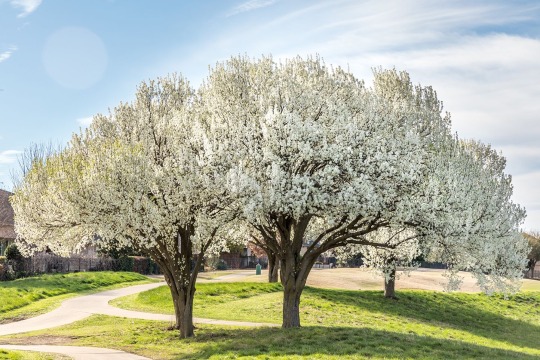
I hate these guys I hate them so much like actually who decided to start planting Bradford Pears they have Zero good qualities I HATE THEM SO MUCH
So here’s some reasons why you should get rid of these:
They smell like a fish market on a hot summer day but all the fish are a week old
The flowers aren’t that cool like sorry there’s plenty of other trees with white flowers
They are BRITTLE. SO BRITTLE. One gust of wind and your tree is GONE.
They will breed with anything. Whore tree. They cross-pollinate to a point where they become incredibly invasive. And also when they do that they grow thorns and get super ugly 👍
THEY’RE PEAR TREES THAT DON’T EVEN GROW PEARS
Did I mention they smell like fish
‼️‼️‼️‼️‼️‼️‼️‼️‼️‼️‼️‼️‼️‼️‼️ If you have Bradford Pears that you can cut down you should cut them down
Some US states will give you a free tree to replace them with
Here are some better trees to plant in your area:
*these are US based recommendations because I’m pretty sure the US is the only place with Evil Bradford Pear Problems*
Magnolias! They smell amazing and have great flowers. They’re native to Florida but will survive in most of the southeastern US
Dogwoods! There’s both an eastern and a western variety and both are native to North America! Just make sure you get the right type for where you live (east vs west)
Pawpaws! These trees bear fruit, are great for pollinators, and their native range spans about half of the United States
Redbuds! Similar to Dogwoods, there’s both an eastern and western variety. Also native to North America, they’re one of the first trees to bloom in spring
Serviceberry! YOU CAN EAT THE BERRIES!!! Also native to North America, they can survive in a ton of different climates and are great for pollinators
You can find more native trees here
This has been a Bradford Pear Hate Post
33 notes
·
View notes
Text
not to be a hater on main but i just stumbled on a tik tok claiming that tsh both takes itself too seriously and could use more absurd comedy and it nearly made me punch a wall
#my quest to find agreeable creators on booktok and booktube leaves me v frustrated sometimes#!!! i accept no criticism of this book#but even without stan goggles on how can say with your entire chest that tsh takes itself too seriously#when it literally makes fun of 'dark academia' types TO YOUR FACE#which is ironic for the book that spawned the entire genre#it's a comedy of manners at the very least#'this book that contains copious amounts of absurdly comedic situations and makes fun of pretentious twits obsessed with aesthetics#could use more absurd comedy and is not satirical enough'#recognising those basic building blocks of the text does NOT even mean to have to like it??#i hate to be bringing the Reading Comprehension debate again but good lord. and this person claims to have a phd in literature too 🤦♀️#i am so over this pretense at criticism that basically boils down to 'i didn't like this thing so i can't be seen to admit it executes#anything well. so instead i'm going to pretend basic obvious techniques in the text don't exist and peddle it as groundbreaking critique'#stuff like recognising basic genre. what happened to that.#i don't like The Hangover either but it would be very strange to call it anything other than a comedy#the secret history#donna tartt#again you don't even have to like the book!!!#I'M SORRY BUT IT MADE ME WANT TO RANT SO BAD#livresque#booktok and booktube are satan's garden
26 notes
·
View notes
Text
The Secret Other Thing: KILL
This is my eighth post in a series I’ll be making on how to increase biodiversity on a budget! I’m not an expert--just an enthusiast--but I hope something you find here helps!
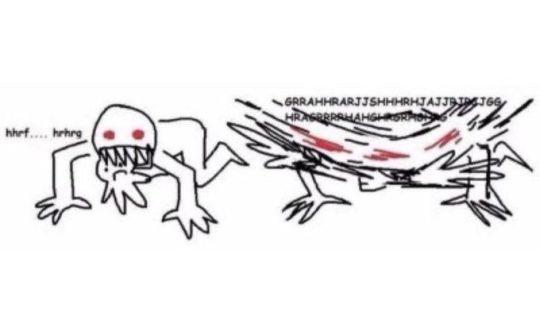
KILL, TEAR, RIP, MAIM.
You may have seen this sentiment a few times on gardening and wildlife blogs and been incredibly confused. Isn’t killing things the opposite of what you should be doing to protect habitats? In some cases, it really is necessary!
Invasive Plants
Invasive plants can do more harm than good, taking up space and nutrients and providing little in return to local wildlife--while spreading and choking out the native plants that would provide the most to our native fauna. Learn how to identify invasive species in your area and how to properly dispose of them, and do so whenever you have the opportunity! You may even be able to find volunteer groups/events where you can join up with like-minded people to remove a specific plant from an area.

(This image refers to the United States specifically--these plants aren't invasive or native everywhere!)
Pro tip, though; if you take out an invasive species and leave empty soil where it was, it’s likely another quick-growing invasive species will just move in. We don’t want that! Try to plant something in its place! If you’re going out on a mission to take out invasive plants, try to keep some native flower seeds or seedlings on your person while you do this work.
Different plants are invasive in different places, so be sure that the plant you're targeting is actually invasive to where you are. You don’t want to rip out a beneficial plant because it’s invasive somewhere else! Social media sites like Instagram and Tumblr are great for spreading information about invasive plants, but they can often be a bit… US-centric. Even I'm guilty of this, plenty of times! Plants like garlic mustard, kudzu, butterfly bush, Amur honeysuckle, wild radish, and Japanese knotweed are high-profile invasive plants that I hear about all the time here in America--but they came from somewhere, and are a part of the environment in these places! Likewise, many plants that are branded as pollinator-friendly and biodiversity boosters here in the states can be awful invasive species elsewhere. Even plants and animals that aren’t invasive in one part of a country or continent can be detrimental in another--Canadian waterweed is native to North America, but it’s actually invasive in Alaska.



(Japanese honeysuckle (Lonicera japonica) vs Coral honeysuckle (Lonicera sempervirens) vs the yellow variety of Coral honeysuckle (Lonicera sempervirens))
Be sure you’re taking out the right plant--be very confident in your ID before you take any action! Amur honeysuckle and Japanese honeysuckle, for example, may be invasive in the US--but coral and northern bush honeysuckles are native and key species in their environments. You don’t want to do harm while trying to do good--double check your IDs. Being certain with your IDs can also prevent you from doing harm to yourself and others--some plants produce toxic smoke when burned. Stay well-read on how to dispose of the invasive plants you’re targeting.

(Garlic mustard pesto! Can't say I've ever had it, but I've heard good things about it online!)
With that being said! Some invasive species can be eaten. It’s free food! And you’re helping the environment? Win-win! Try looking up recipes that use these plants, or see how you can substitute something else for them! Foraging guides and blogs would likely be extremely helpful for this.
A super easy way to help curb the spread of invasive plants is to not grow them yourself! Double check any plant you’re considering buying or growing from seed--some sold in stores like butterfly bush are often touted as great plants to add to a pollinator garden, but in reality are an invasive species that eagerly displaces native shrubs here in the states.

POV: you're working the garden center at the Blue Big Box Store, you care about the environment, and every day you watch people buy Butterfly Bush and can do jack shit about it asides from try to gently steer them towards something else (but the other next best option was also Invasive Tropical Milkweed because its easier for Big Box Store to sell) I have a personal vendetta against people who grow Butterfly Bush (I live in The States) (If you didn't know Butterfly Bush was invasive in the US before now you're valid but also please god consider replacing it with an alternative ASAP)
Invasive Animals

POV 30 to 50 feral hogs are running into your yard within 3-5 minutes while your small children play
Invasive animals and insects compete for resources, take over habitat, and can even spread disease--all while pushing native species out or dwindling their numbers. Keep track of invasive animals you see and report them. Depending on the severity of the situation, killing them can be necessary and even encouraged. Do be sure it’s an invasive species and not a look-alike. If you’re unsure, take pictures, do research, and take action the next time.
Some high-profile invasive species in the US are spotted lanternflies, cuban tree frogs, hammerhead worms, feral swine, zebra mussels, lionfish, asian carp, burmese python, and others. Again, do make sure you’re targeting species that are invasive in your area; I doubt Asian carp are considered invasive in Asia, for example. Similarly, the American bullfrog is native to the eastern US and Canada, but is quickly becoming an invasive species around the rest of the world. Not to mention, the racoon problem in Japan…

Some invasive species can be eaten as well! Some of them taste awful, and some can even be dangerous to eat or handle without caution. I would do a good amount of research online before trying to cook up just anything.
Doing it Right
If you’re trying to handle invasive species, you do have to ensure you’re doing it properly. As you do your research, you’ll likely see if the species should be photographed and reported and to what channels. Also in some cases, going about destroying them incorrectly could unintentionally help them spread--some plants spread quickly through rhizomes into disturbed soil, and hammerhead worms can actually regenerate from pieces into fully-developed new worms when you try to cut them up. Some invasive species are even actively harmful to humans, so I cannot emphasize enough that you need to be sure about what you’re dealing with and be careful about it. Giant Hogweed, for example, has toxic sap that’ll cause severe skin inflammation and painful blisters if it contacts skin and is exposed to sunlight. The blisters last for months, and the skin may develop long-term sensitivity for sunlight.
If you’re unsure about how to handle an invasive plant, or are unsure of it’s identity, try contacting your local university co-op extension service if you’re in the states. They can tell you how to remove it safely and effectively. I can't say for sure what other channels would be the best option for someone living outside the states, so if anyone knows, feel free to chime in!
Pets
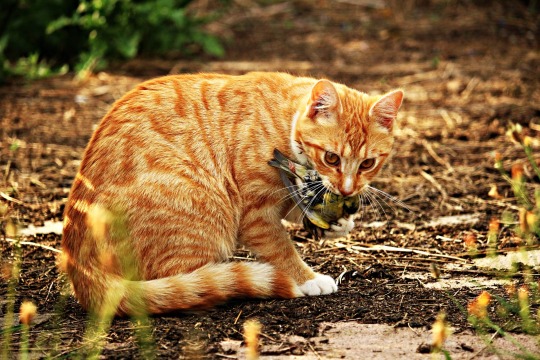
POV: ur little outdoor kitty Firestar is destroying the balance of your local ecosystem plz keep him INSIDE
Please keep your pets inside, or at least on a leash. An outdoor cat can do a lot more damage than one might imagine, as well as unrestrained dogs.
That’s the end of this post! And... technically, the last post in the series! My next and final final post is gonna be basically a giant list of all my sources that I used to make this post! I hope this post series was informative, helpful, interesting--anything of value, really! Feel free to reply with any questions, your success stories, or anything you think I may have forgotten to add in!
#biodiversity#solarpunk#gardening#invasive species#ani rambles#out of queue#the biodiversity saga#i wasn't sure where to add this in on the post but not all non natives are invasive and some native plants have sorta invasive-y habits#i dont remember the proper term that isn't just 'invasive-y' but yknow.#with that being said I tend to do a quick google search to make sure a plant I wanna buy isn't invasive before I add it to my garden#with that being said fuck big box stores STOP SELLING INVASIVE PLANTS I SWEAR TO GOD I DONT CARE IF THEY'RE POPULAR STOP IT STOP IT STOP IT#someday I will go on an entire unhinged rant about tropical milkweed#ive already done it before but I'm willing to do it again fuck it#anyways!!!! this is the last post if you don't wanna read Collection Of Links: The Musical so uh#hope this was a nice series with helpful information!! love yall byeeee
58 notes
·
View notes